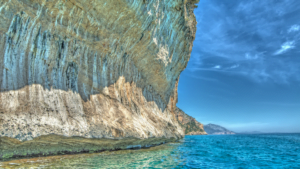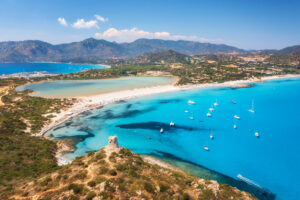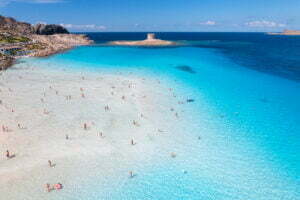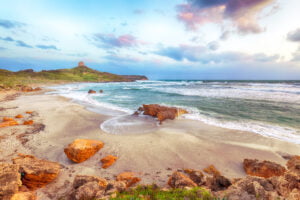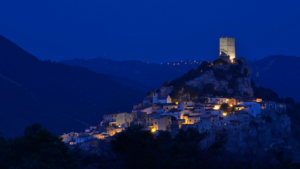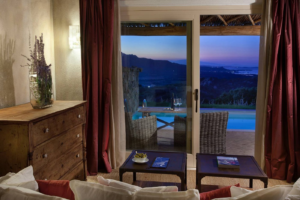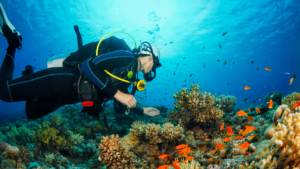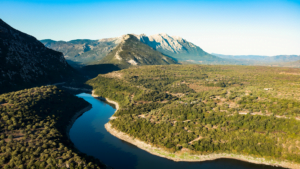Surrounded by the clear, turquoise waters of the Mediterranean Sea, Sardinia offers more than just breathtaking beaches and scenic beauty; it’s a place where ancient history and modern life meld seamlessly together, creating a unique culture.
- The island’s culture is deeply influenced by various civilizations that have occupied it throughout history, including the Phoenicians, Carthaginians, Romans, Byzantines, and Aragonese. This blend of influences has resulted in a rich cultural heritage that is evident in the island’s architectural ruins, traditional music, folk dances, and vibrant festivals.
- Understanding Sardinia’s culture, language, and religion is crucial for visitors who wish to fully experience the island’s identity and traditions. The Sardinian language, Sardo, an element of the island’s identity, varies from village to village, reflecting the island’s complex history. Religion plays a significant role in daily life, with many local traditions and festivals having religious significance.
Sardinia’s cultural identity is a vivid mosaic, enriched by the layers of history and geographic isolation that have fostered a distinct way of life, unique traditions, and a strong sense of community. This island, floating in the Mediterranean, has been a crossroads of civilizations, each leaving an indelible mark on its culture, from the Nuragic civilization to Phoenician traders, Roman conquerors, and Spanish rulers. These influences are woven into the fabric of Sardinian life, creating a culture that is both diverse and singular.
Culture
Traditional Festivals and Events
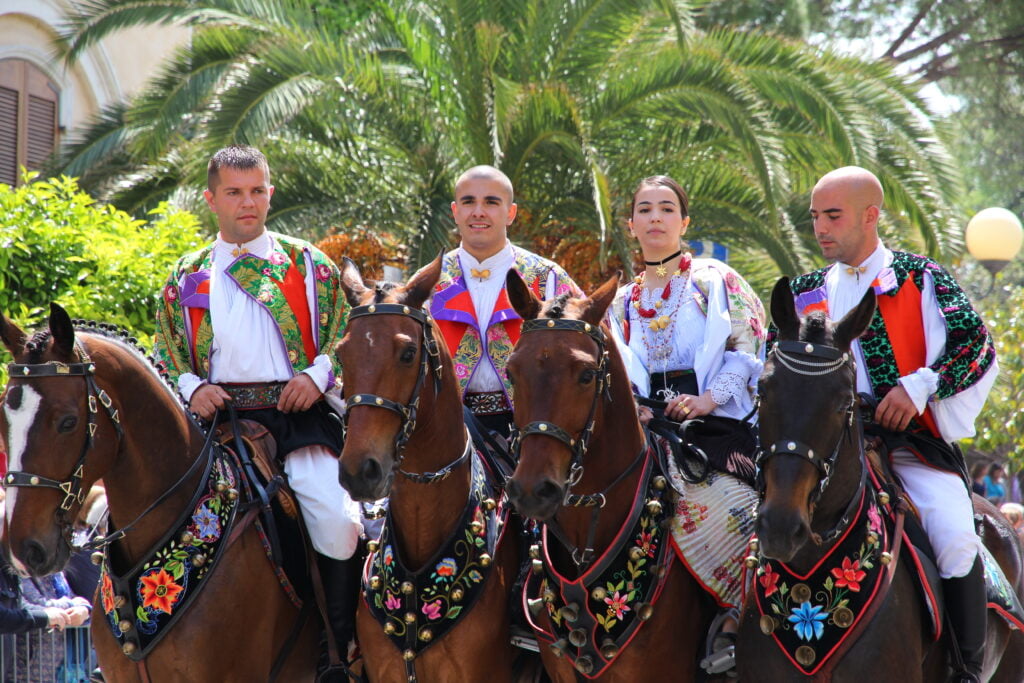
Sardinia bursts into color and life with its traditional festivals and events, which are pivotal in preserving the island’s cultural heritage. These gatherings are not just tourist attractions but living traditions that maintain the community’s bond and pass down customs from generation to generation. The Sagra del Redentore in Nuoro and the Cavalcata Sarda in Sassari are spectacular showcases of Sardinian folk attire, music, and dance. Perhaps the most striking is the Sa Sartiglia in Oristano, a medieval jousting tournament that transforms the town into a scene from the past.
Music and dance play central roles in these festivals, with the launeddas, a traditional woodwind instrument, providing haunting melodies that have echoed across the island for centuries. Traditional dances, such as the ballu tundu (round dance), are communal, symbolizing unity and continuity. The intricate, handcrafted costumes worn during these events are not merely attire but narrate stories of the island, its people, and their ancestral trades.
Family and Social Structures
At the heart of Sardinian culture lies the family, considered the cornerstone of society. The island’s social structures are deeply communal, with extended families often living close to one another or under the same roof. This closeness fosters a strong sense of community and mutual support, which is particularly evident in rural areas where traditional lifestyles are more prevalent.
Communal living extends beyond the family unit, with entire villages coming together to celebrate life’s milestones, harvests, and religious festivals. Such gatherings are not just social events but rituals that reaffirm the community’s cohesion and shared identity.
The preservation of traditions is a collective responsibility in Sardinian society, with elders passing down knowledge, stories, and skills to the younger generations. This transmission of cultural heritage is critical in keeping the island’s customs alive, from the Sardinian language and culinary practices to folk music and artisan crafts.
In a world that is rapidly changing, Sardinians hold tight to their traditions, celebrating their identity and ensuring that their cultural legacy endures for generations to come.
Language
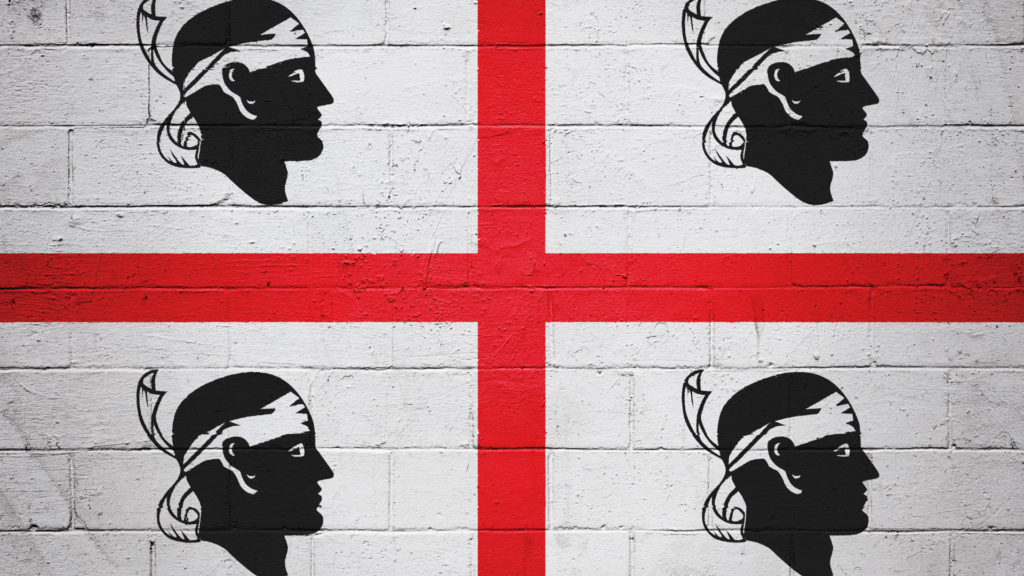
Sardinia presents a fascinating linguistic landscape that mirrors its complex history and cultural diversity. The island’s native language, Sardinian (Sardo), coexists with Italian, the official language of Italy. Recognized as a minority language, Sardinian is an integral part of the island’s identity, reflecting its rich past and the resilience of its people.
Linguistic Diversity and Dialectal Variations
Sardinian is not a monolithic language but is characterized by a variety of dialects that differ significantly from one region to another. The main dialects include Logudorese and Campidanese in the central and southern parts of the island, respectively, each with its own sub-dialects that can vary even from village to village.
The language itself bears the marks of the many civilizations that have occupied Sardinia over the millennia. Latin forms its foundational layer, given the island’s incorporation into the Roman Empire. However, the linguage of Sardinia is also threaded with influences from Phoenician, Arabic, and Byzantine Greek due to the island’s strategic importance in the Mediterranean. Later, Spanish and Catalan left their imprint during the Aragonese and Spanish dominions, further enriching Sardinian’s vocabulary and phonetics.
Contemporary Status and Preservation Efforts
In recent decades, there has been a growing awareness of the importance of preserving Sardinian. Despite the dominance of Italian in public life and media, efforts are underway to revitalize Sardinian, recognizing its crucial role in maintaining the island’s cultural heritage. Schools have begun to introduce Sardinian language classes, and there are initiatives to promote its use in public administration and media.
The preservation of Sardinian is not just about saving a language but about maintaining a connection to the island’s history and ancestors. It is a source of pride for many Sardinians, a declaration of their unique identity in the face of globalization and cultural homogenization.
Sardinian Language and Local Identity
For the people of Sardinia, the language is more than a means of communication; it is a cornerstone of their identity. Speaking Sardinian is a manifestation of belonging to the island, an affirmation of its traditions and history. The language carries with it the stories, the values, and the collective memory of the Sardinian people.
The effort to preserve Sardinian is, therefore, an effort to preserve the soul of Sardinia itself. It speaks to a broader desire to celebrate and maintain the island’s distinctiveness, ensuring that future generations can connect with their heritage and continue to tell the story of this remarkable Mediterranean island. Through education, cultural initiatives, and community engagement, Sardinians are working to ensure that their language, and thereby their identity, remains vibrant and enduring.
Religion
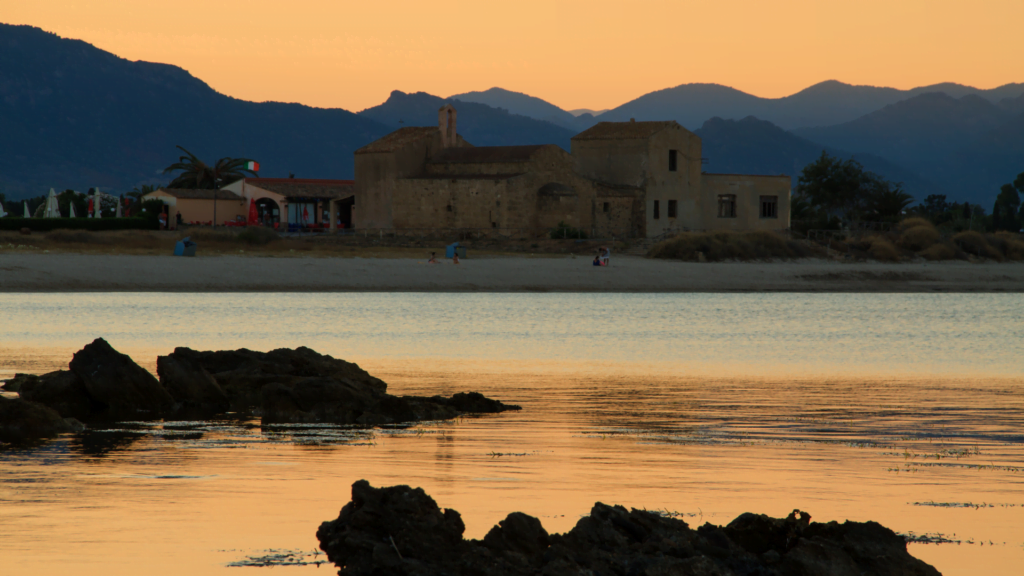
Predominant Roman Catholic Faith
In Sardinia, Roman Catholicism is a fundamental aspect of daily life and culture. The faith’s deep roots in the island are evident in the high rate of participation in religious practices and the integral role of the church in community life. This widespread devotion manifests in regular church attendance, the observance of religious holidays, and the incorporation of Catholic values into the social fabric of Sardinian society.
Younger generations are usually more laid back with their faith and not strict as their parent or grand parents.
Syncretism of Traditions
One of the most fascinating aspects of Sardinian religiosity is the seamless blending of Christian traditions with ancient pagan rituals. This syncretism reflects the island’s deep historical layers, where pre-Christian beliefs have been woven into the Christian fabric, creating unique practices that are specific to the island. Festivals such as Sa Sartiglia in Oristano and Sant’Efisio in Cagliari showcase this blend, where pagan symbols of fertility and protection merge with Christian iconography and saints’ veneration.
These festivals not only highlight the religious devotion of the Sardinian people but also their attachment to ancient traditions that predate Christianity. The ceremonies often involve elaborate rituals, costumes, and processions that trace their origins back to the Nuragic civilization, yet have been Christianized to celebrate patron saints or religious holidays. This fusion of beliefs is represent the island’s complex cultural identity and its inhabitants’ ability to harmonize different aspects of their heritage.
Unique Religious Sites
Sardinia is dotted with an array of unique religious sites that hold significant cultural and spiritual value. Small chapels, often nestled in breathtaking natural settings, offer insight into the local communities’ devotion and the historical spread of Christianity across the island. These chapels serve as focal points for religious festivals and pilgrimages, drawing visitors from nearby villages and beyond.
Pilgrimage destinations, such as the Basilica di Nostra Signora di Bonaria in Cagliari and the Santuario di San Francesco in Lula, are not only spiritual centers but also repositories of art, history, and culture. They encapsulate the island’s religious heritage, housing relics, and artworks that span centuries.
Moreover, the Nuraghe sites, ancient megalithic edifices unique to Sardinia, though primarily prehistoric in their origins, have also become intertwined with the island’s Christian landscape. Some of these ancient structures are associated with Christian legends and myths, further illustrating the deep interconnection between Sardinia’s religious faith and its ancient past.
Events
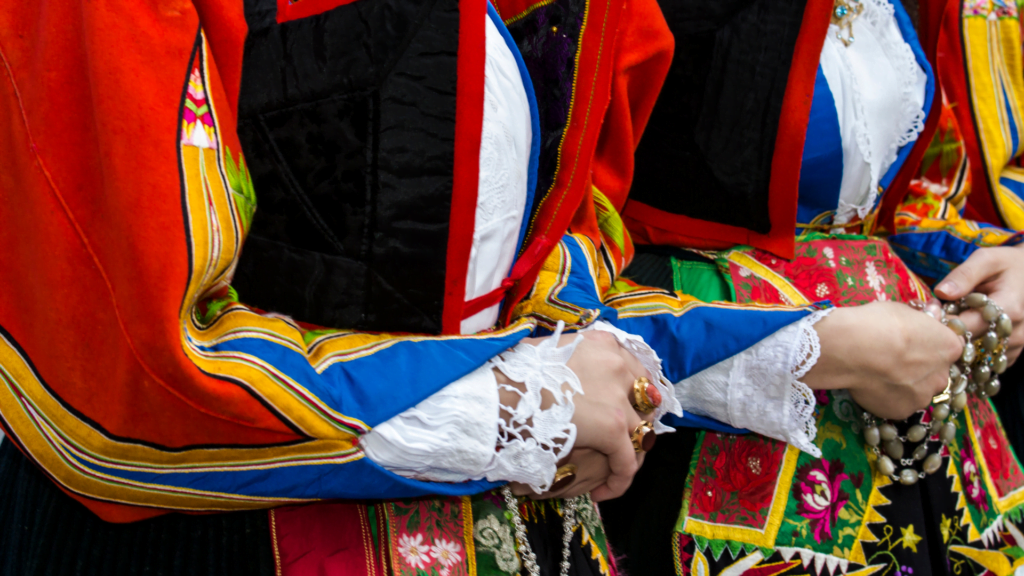
Sardinia is a vibrant stage for an array of events that span the cultural, religious, and gastronomic spectrum. These events are not just occasions for celebration but are deeply embedded in the island’s identity, offering both locals and visitors a glimpse into Sardinia’s soul.
Traditional and Cultural Festivals
At the heart of Sardinian life are its traditional and cultural festivals, which often trace their origins back centuries. These festivals are a dynamic expression of the island’s heritage, showcasing folk music, dance, elaborate costumes, and ancient rituals. One of the most emblematic is the Cavalcata Sarda in Sassari, an event that brings together horse riders from across the island in a stunning display of skill, traditional attire, and local pride. Another notable celebration is the Festa di Sant’Efisio in Cagliari, one of the oldest and most colorful religious processions in Italy, venerating the patron saint of Sardinia with a four-day journey from Cagliari to Nora.
Religious Events
Religious events in Sardinia are profound and encompass more than just church services; they are communal experiences that blend devotion with celebration. Events like Sa Sartiglia in Oristano blend medieval jousting traditions with religious homage, creating a spectacle of equestrian skill set against the backdrop of ancient rituals. Easter Week in Alghero, heavily influenced by Catalan traditions, showcases processions that are both solemn and spectacular, drawing visitors from all corners to witness the passion plays and silent marches.
Gastronomic Events
Gastronomic events are pivotal in Sardinian culture, celebrating the island’s rich culinary traditions and local produce. The Sagra del Carciofo (Artichoke Festival) in Uri and the Sagra delle Ciliegie (Cherry Festival) in Villacidro are just a couple of examples where local communities celebrate their agricultural heritage. These events often feature tastings, cooking demonstrations, and markets where visitors can indulge in the flavors of Sardinia, from pecorino cheese and myrtle liqueur to the freshest seafood and artisanal bread.
Music and Arts Festivals
Sardinia’s music and arts festivals show the island’s vibrant cultural scene, drawing talent from across the globe and offering a platform for local artists. The Time in Jazz festival in Berchidda, initiated by Sardinian jazz trumpet player Paolo Fresu, melds jazz with the island’s stunning landscapes, creating an immersive cultural experience. Similarly, the Island of the Stories literary festival in Gavoi attracts authors, poets, and readers for discussions, readings, and workshops, set in the charming streets of one of Sardinia’s most picturesque towns.
Sporting Events

The rugged landscapes and pristine waters of Sardinia make it an ideal backdrop for sporting events, which often become celebrations of the island’s natural beauty. The Rally Italia Sardegna is part of the World Rally Championship, offering thrilling races through the island’s diverse terrain. Water sports enthusiasts look forward to the Windsurfing Grand Slam at Porto Pollo, where the island’s wind conditions are perfect for high-level competition.
These events, each unique in its character, collectively showcase the diversity and richness of Sardinian culture. They offer moments of unity, celebration, and pride, reinforcing the bonds within communities and introducing the rest of the world to the island’s enduring traditions and vibrant contemporary life.

